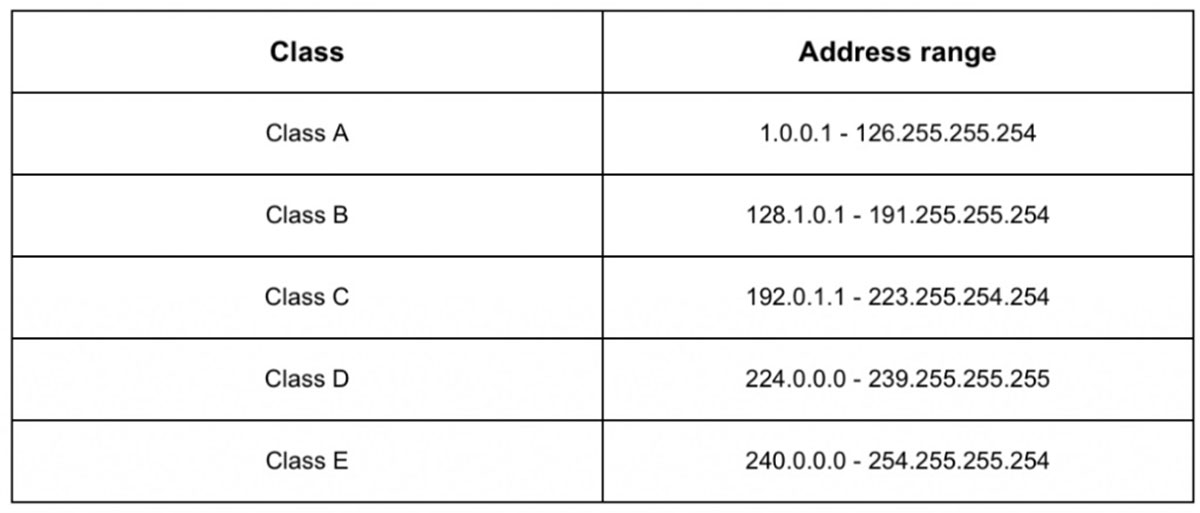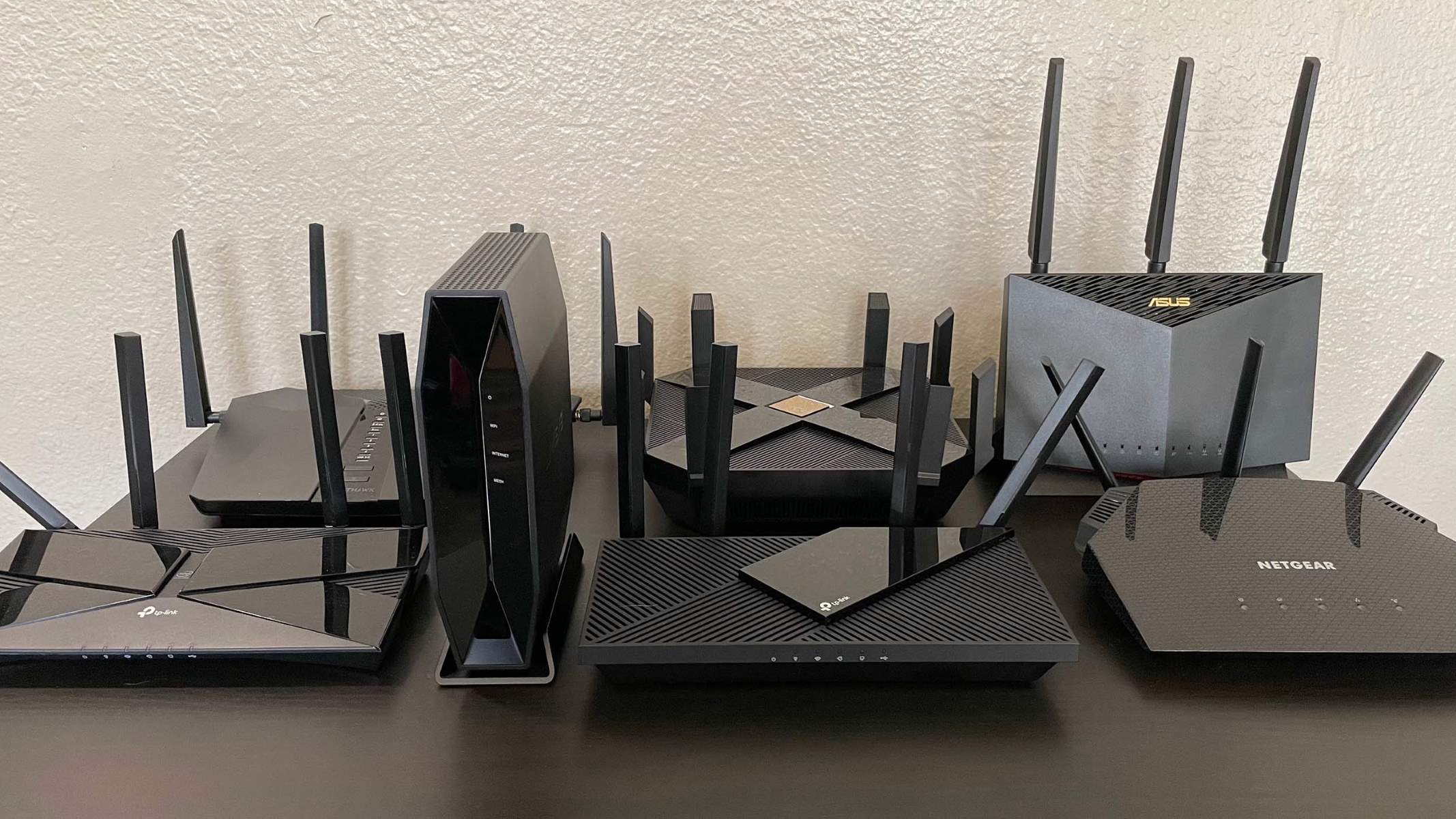Introduction
An IP (Internet Protocol) address is a unique numerical label assigned to each device connected to a computer network. It serves as the device’s identifier, allowing it to communicate and exchange data with other devices on the network. IP addresses are essential for the functioning of the internet as they facilitate the routing of information between devices.
Within the realm of IP addresses, there are two primary types: public and private. Public IP addresses are globally unique and can be accessed from anywhere on the internet. On the other hand, private IP addresses are used within local networks and are not directly reachable from the internet.
In this article, we will explore the concept of private IP addresses in more detail. We will discuss what private IP addresses are, their advantages, how they are used, and the distinction between public and private IP addresses.
Understanding private IP addresses is crucial for network administrators and individuals who manage local networks. Having a clear grasp of this concept ensures efficient and secure communication within internal networks while keeping sensitive information protected from external threats.
So, let’s dive into the world of private IP addresses and explore their significance in computer networking.
What is an IP Address?
An IP (Internet Protocol) address is a unique numerical label assigned to each device connected to a computer network. It serves as the device’s identifier, enabling it to send and receive data over the network. Just like a home address helps locate a specific house, an IP address helps locate a particular device on a network.
IP addresses are essential for the functioning of the internet as they allow devices to communicate with each other. They facilitate the routing of information from the source device to the destination device across various networks.
IP addresses are typically written in a “dotted-decimal” notation, consisting of four sets of numbers separated by periods. Each number can range from 0 to 255. For example, an IP address may look like this: 192.168.0.1.
There are two versions of IP addresses currently in use: IPv4 (Internet Protocol version 4) and IPv6 (Internet Protocol version 6). IPv4, the older and more widely used version, consists of a 32-bit address space, allowing for approximately 4.3 billion unique addresses. However, due to the rapid growth of devices and the increasing demand for addresses, IPv6 was introduced. IPv6 uses a 128-bit address space, providing an almost unlimited number of unique addresses.
Each device connected to a network, whether it’s a computer, smartphone, or IoT (Internet of Things) device, is assigned a unique IP address. This address allows data packets to be routed to the correct device on the network, ensuring that communication and information exchange can occur seamlessly.
Now that we have a basic understanding of IP addresses, let’s explore the concept of private IP addresses and their significance within network environments.
What are Private IP Addresses?
Private IP addresses are a specific range of IP addresses that are reserved for use within private networks. These addresses are not directly accessible from the internet and are intended for internal use within a local network or organization.
The main purpose of private IP addresses is to conserve the limited pool of available public IP addresses. With the rapid growth of devices and the increasing demand for internet connectivity, the number of available public IP addresses is limited. By using private IP addresses within local networks, organizations can reduce the need for public IP addresses, conserving them for devices that require internet access.
Private IP addresses are typically used in homes, businesses, and other local network environments. Within these networks, devices can communicate with each other using their private IP addresses without the need for a public IP address.
There are three defined ranges of private IP addresses:
- 10.0.0.0 to 10.255.255.255 (10.0.0.0/8)
- 172.16.0.0 to 172.31.255.255 (172.16.0.0/12)
- 192.168.0.0 to 192.168.255.255 (192.168.0.0/16)
These private IP address ranges were specifically reserved by the Internet Assigned Numbers Authority (IANA) for private network use, ensuring they do not conflict with public IP addresses.
Using private IP addresses provides several advantages. Firstly, it allows for easier and more secure communication within internal networks. Devices within the network can exchange data, share resources, and communicate without exposing themselves to potential threats from the internet.
Secondly, private IP addresses help simplify network management. Network administrators can allocate IP addresses to devices within the private network without the need for coordination with external entities. This provides greater flexibility and ease in managing and expanding the network infrastructure.
In the next section, we will delve deeper into the advantages of private IP addresses and how they are used within network environments.
Advantages of Private IP Addresses
Private IP addresses offer several advantages within network environments, providing flexibility, security, and efficiency. Here are some key advantages of using private IP addresses:
- Conservation of Public IP Addresses: One of the primary advantages of using private IP addresses is the conservation of public IP addresses. With the limited availability of public IP addresses, using private IP addresses within local networks helps reduce the demand for public addresses and ensures their optimal utilization.
- Enhanced Network Security: Private IP addresses offer improved network security by providing an additional layer of protection. Since private IP addresses are not directly accessible from the internet, devices using these addresses are not exposed to potential threats or unauthorized access from external sources. This helps in maintaining the confidentiality and integrity of internal network resources.
- Easier Network Administration: Private IP addresses simplify network administration by enabling easy allocation and management of IP addresses within the local network. Network administrators have the flexibility to assign IP addresses to devices without the need for coordination with external entities. This ease of administration makes it more efficient to expand, troubleshoot, and maintain the network infrastructure.
- Improved Network Performance: By using private IP addresses, organizations can optimize network performance. Since communication between devices within the network occurs through private IP addresses, there is no need for routing or translation of IP packets. This results in faster and more efficient data transfer within the local network, leading to improved overall network performance.
- Cost Savings: Implementing private IP addresses can also result in cost savings for organizations. With public IP addresses being a limited resource and often requiring additional fees, using private IP addresses within local networks eliminates the need for purchasing multiple public IP addresses. This can lead to significant cost savings, especially for large-scale networks.
The advantages of private IP addresses make them a valuable component of network infrastructure. By leveraging these addresses, organizations can create secure, efficient, and cost-effective networks that meet their specific requirements.
In the next section, we will explore how private IP addresses are used within network environments and the role of NAT (Network Address Translation) in facilitating communication between private and public networks.
How are Private IP Addresses Used?
Private IP addresses are utilized in various ways within network environments to enable efficient communication and resource sharing among devices. Here are some key ways in which private IP addresses are used:
- Local Network Communication: Private IP addresses facilitate communication within local networks. Devices within the network can send and receive data packets using their respective private IP addresses. This allows for seamless communication between computers, printers, servers, and other devices connected to the network.
- Internal Resource Sharing: Private IP addresses enable the sharing of resources within a local network. Devices can access shared files, printers, and other network resources using their private IP addresses. This promotes collaboration and improves productivity within organizations.
- Network Segmentation: Private IP addresses are often used to segment large networks into smaller subnets. By creating separate subnets with their own private IP address ranges, organizations can better manage and secure their networks. This helps in controlling network traffic, isolating devices, and implementing appropriate security measures.
- Virtual Private Networks (VPNs): Private IP addresses play a vital role in establishing Virtual Private Networks (VPNs). VPNs allow secure remote access to a private network over a public network, such as the internet. Private IP addresses are used within the VPN infrastructure to create a secure tunnel for data transmission between remote devices and the private network.
- Network Address Translation (NAT): NAT (Network Address Translation) is a technique that allows devices within a private network to communicate with devices on the public internet. NAT translates private IP addresses into public IP addresses, enabling communication between the private and public networks. This is done through a NAT router, which assigns a temporary public IP address to the private IP address of a device. NAT helps in conserving public IP addresses and adds an extra layer of security by hiding internal IP addresses from external networks.
Overall, private IP addresses are used to create secure, manageable, and efficient network environments. They enable seamless communication, resource sharing, and network segmentation within organizations. Additionally, private IP addresses work in conjunction with NAT and VPN technologies to establish secure connections with external networks or remote devices.
In the next section, we will explore the specific ranges of private IP addresses and how to determine if an IP address is private.
Private IP Ranges
Private IP addresses are assigned within specific address ranges that are reserved for private network use. The Internet Assigned Numbers Authority (IANA) has defined three main private IP address ranges, which are as follows:
- 10.0.0.0 to 10.255.255.255 (10.0.0.0/8): The range of 10.0.0.0 to 10.255.255.255 provides a large address space for private networks. This range allows for approximately 16.7 million unique private IP addresses, making it suitable for large organizations, campuses, or ISPs.
- 172.16.0.0 to 172.31.255.255 (172.16.0.0/12): The range of 172.16.0.0 to 172.31.255.255 provides 16 contiguous blocks of private IP addresses. Each block offers around 1 million private IP addresses, resulting in a total of approximately 16 million addresses. This range is commonly used in medium to large-sized organizations that require multiple subnets.
- 192.168.0.0 to 192.168.255.255 (192.168.0.0/16): The range of 192.168.0.0 to 192.168.255.255 provides a smaller address space with around 65,000 unique private IP addresses. This range is often used in homes, small businesses, and small-scale networks.
These private IP ranges were specifically chosen to ensure that they do not overlap with public IP addresses, preventing any conflicts between private and public networks.
It is important to note that private IP addresses cannot be used to directly access devices on the internet. To establish communication with external networks, private IP addresses need to be translated into public IP addresses using techniques such as Network Address Translation (NAT).
Next, let’s explore how to determine if an IP address is private or public.
How to Determine Private IP Addresses
Determining whether an IP address is private or public is essential for network administrators and individuals managing local networks. Here are a few methods to identify private IP addresses:
1. IP Address Range: The most common way to determine if an IP address is private is by checking if it falls within the defined private IP address ranges. As mentioned earlier, these ranges include:
- 10.0.0.0 to 10.255.255.255 (10.0.0.0/8)
- 172.16.0.0 to 172.31.255.255 (172.16.0.0/12)
- 192.168.0.0 to 192.168.255.255 (192.168.0.0/16)
If an IP address falls within any of these ranges, it is considered a private IP address.
2. Network Configuration: Another way to identify private IP addresses is to check the network configuration. Private IP addresses are typically assigned to devices within local networks, such as homes or businesses, where they are not accessible from the internet. If an IP address is configured on a device within a local network and it is not a public IP address, it is likely a private IP address.
3. WHOIS Lookup: Conducting a WHOIS lookup can also help determine if an IP address is private or public. WHOIS is a protocol that provides domain registration information for registered IP addresses. By performing a WHOIS lookup on an IP address, you can identify whether it is registered as a public or private address.
4. Internet Service Provider (ISP) Documentation: Consulting the documentation or guidelines provided by your Internet Service Provider (ISP) can also help determine whether an IP address assigned to your network is private or public. ISPs often provide information about the type of IP addresses they assign to customers, including whether they are private or public.
By utilizing these methods, network administrators and individuals can easily identify and differentiate between private and public IP addresses within their network environments. This knowledge is crucial for network management and ensures the proper configuration and security of local networks.
Next, let’s compare the differences between public and private IP addresses.
Public IP Addresses vs Private IP Addresses
Public IP addresses and private IP addresses are two distinct types of addresses used in networks. Here are the key differences between public and private IP addresses:
Scope: Public IP addresses are globally unique and can be accessed from anywhere on the internet. They are assigned to network devices that need to communicate with the internet and are used for external communication. In contrast, private IP addresses are reserved for internal use within local networks. They are not directly accessible from the internet and are used for internal communication among devices within the network.
Accessibility: Public IP addresses are reachable from any device connected to the internet, allowing for inbound and outbound communication between the device and the internet. Private IP addresses, on the other hand, are only accessible within the local network. Devices using private IP addresses can communicate with each other within the network, but they cannot be directly accessed from external networks without the use of techniques like Network Address Translation (NAT).
Number of Addresses: Public IP addresses are limited in number due to the scarcity of available IPv4 addresses. IPv4 provides approximately 4.3 billion unique addresses, and with the growth of connected devices, the demand for public IP addresses exceeds the supply. In contrast, private IP addresses are not limited in number. They are designed for use within local networks and can be reused across different networks, enabling organizations to create efficient and secure internal networks without the need for a large pool of public IP addresses.
Security: Public IP addresses can be more vulnerable to security threats as they are directly exposed to the internet. Devices using public IP addresses are susceptible to external attacks, such as hacking attempts or malicious activities from unknown sources. Private IP addresses provide an additional layer of security as they are not directly reachable from the internet. This helps protect internal network resources by reducing the exposure of devices to external threats.
Network Address Translation (NAT): NAT is a technique used to translate private IP addresses into public IP addresses, enabling devices within a private network to communicate with devices on the public internet. NAT acts as a bridge between private and public networks, allowing for the seamless exchange of data. It helps conserve public IP addresses while providing enhanced security for private networks.
Understanding the differences between public and private IP addresses is crucial for network administrators and individuals managing local networks. It helps in implementing appropriate network configurations, improving security measures, and ensuring efficient communication between devices within the network and the internet.
Now that we have explored the differences between public and private IP addresses, let’s delve into the concept of Network Address Translation (NAT) and its role in facilitating communication between private and public networks.
NAT (Network Address Translation)
NAT, which stands for Network Address Translation, is a technique used to facilitate the communication between private IP addresses within a local network and devices outside the network, typically on the public internet. NAT acts as an intermediary, translating private IP addresses into public IP addresses to enable successful data transmission.
One of the primary purposes of NAT is to conserve the limited pool of public IP addresses. Since private IP addresses are not globally unique and cannot be directly accessed from the internet, they cannot be used for direct communication with external devices. Instead, NAT allows private IP address users to communicate with devices on the public internet through the use of a single or a few public IP addresses.
How does NAT work? When a device with a private IP address wants to communicate with a device on the internet, the NAT router acts as an intermediary. It assigns a temporary public IP address to the private IP address of the device. This public IP address is used in the communication with external devices. The router keeps track of the translations, ensuring that responses from the internet are routed back to the corresponding private IP address within the local network.
There are several types of NAT, including:
- Static NAT: Static NAT involves mapping a specific private IP address to a specific public IP address on a one-to-one basis. This type of NAT is typically used when devices within the local network require consistent public IP addresses for specific purposes, such as hosting a website or a server.
- Dynamic NAT: Dynamic NAT maps a range of private IP addresses to a pool of public IP addresses. The router dynamically assigns a public IP address from the pool to private IP addresses when communication with the internet is initiated. This allows multiple devices within the local network to share a limited number of public IP addresses.
- Port Address Translation (PAT) or Network Address Port Translation (NAPT): PAT or NAPT is a variation of NAT that allows multiple private IP addresses to share a single public IP address. It achieves this by translating both the IP address and port number of the private IP address to a unique combination on the public side. PAT is commonly used in home networks and small businesses where multiple devices need to access the internet simultaneously.
By using NAT, organizations can maximize the utilization of public IP addresses, enhance network security by hiding internal IP addresses, and simplify the configuration and management of the network infrastructure.
In the next section, we will wrap up the article by summarizing the key points covered regarding private IP addresses and their significance in network environments.
Conclusion
Private IP addresses play a vital role in network environments, providing a range of benefits such as conservation of public IP addresses, enhanced network security, easier network administration, improved network performance, and cost savings. By reserving specific address ranges for internal use, organizations can create secure and efficient local networks that meet their specific requirements.
Understanding the distinction between public and private IP addresses is crucial for network administrators and individuals managing local networks. Public IP addresses are globally unique, accessible from the internet, and used for external communication, while private IP addresses are reserved for internal use within local networks and are not directly reachable from the internet.
Network Address Translation (NAT) acts as a bridge between private and public networks, allowing devices with private IP addresses to communicate with devices on the public internet. NAT conserves public IP addresses, enhances security, and simplifies network configuration.
Identifying and utilizing private IP addresses within network environments allows for seamless communication, efficient resource sharing, and network segmentation. It provides organizations with control over their internal networks, improved security, and flexibility in managing network resources.
To determine if an IP address is private, one can check if it falls within the defined private IP address ranges, review the network configuration, perform a WHOIS lookup, or consult the documentation provided by the Internet Service Provider (ISP).
In conclusion, private IP addresses are a critical component of network infrastructure. They offer numerous advantages, including efficient resource management, enhanced security, and cost savings. By leveraging private IP addresses within local networks, organizations can establish secure, scalable, and efficient communication environments.

























